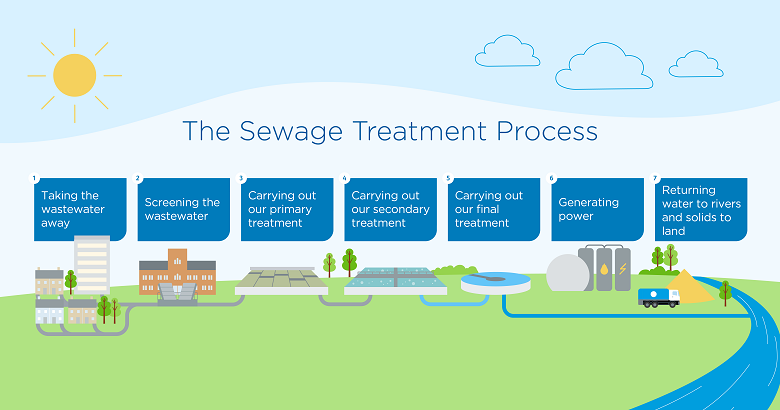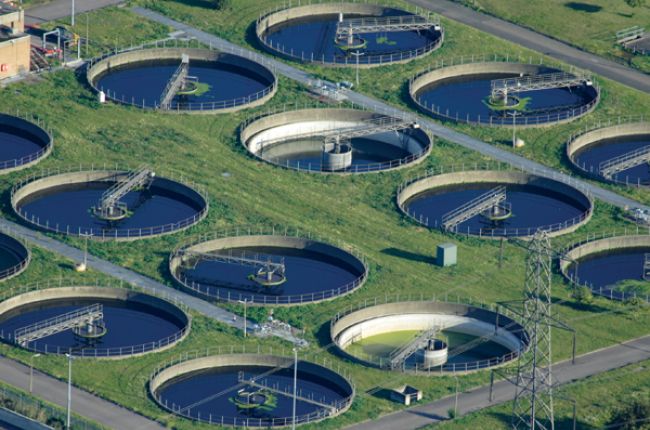Exploring the Role of Biotechnology in Waste Water Treatment
Exploring the Role of Biotechnology in Waste Water Treatment
Blog Article
Strategic Approaches to Enhance Drainage Therapy Performance and Decrease Environmental Impact
In the world of drainage treatment, the mission for enhanced effectiveness and minimized environmental influence is a perpetual obstacle that requires critical solutions. As culture grapples with the essential to manage water sources sustainably, a nuanced method ends up being necessary. The combination of advanced treatment innovations, energy-efficient processes, resource healing approaches, enhanced nutrient elimination strategies, and smart monitoring and control systems represents a multifaceted framework for addressing these pushing problems. What lies at the core of this facility internet of methods is the prospective to transform the method we approach waste water treatment, not simply as a process of disposal, but as an important chance for innovation and environmental stewardship.
Advanced Therapy Technologies
Advanced membrane layer filtration systems have actually revolutionized sophisticated wastewater therapy processes, substantially enhancing the removal of impurities. These innovative systems work forcibly water with a semi-permeable membrane layer, effectively separating pollutants from the water stream. The membrane layer's microscopic pores trap contaminants such as microorganisms, viruses, and suspended solids, permitting just purified water to go through. This modern technology has verified to be very efficient in getting rid of a large range of impurities, including pharmaceuticals, heavy steels, and organic compounds, which are typically testing to remove via conventional treatment techniques.
Additionally, membrane filtration systems supply many advantages over conventional therapy methods. In addition, these systems are extremely versatile and can be easily incorporated right into existing treatment plants or utilized as standalone units for decentralized applications.
Energy-Efficient Procedures
The combination of energy-efficient procedures in wastewater therapy systems is essential for enhancing source utilization and decreasing functional prices. One key method to boosting power efficiency in wastewater therapy is the application of advanced aeration systems, such as fine bubble diffusers or surface aerators, which can enhance oxygen transfer performance and decrease energy consumption.
Moreover, optimizing process control and automation via the use of sophisticated sensing units and keeping an eye on systems can enhance general power performance by adjusting operations in real-time based on real need and conditions. Carrying out energy audits and on a regular basis checking power performance indicators are vital techniques to recognize locations for renovation and track energy-saving efforts successfully. Generally, the adoption of energy-efficient processes in wastewater therapy not just benefits the environment but additionally adds to long-lasting cost savings and functional sustainability.
Resource Recovery Strategies
With a concentrate on enhancing resource utilization and sustainability in wastewater therapy systems, the application of resource recuperation methods becomes a pivotal facet in improving operational performance. Resource recovery strategies in wastewater therapy entail the identification and extraction of useful resources from the waste stream, thereby transforming what was once considered waste right into an important asset. By carrying out resource recuperation methods such as nutrient elimination and healing, power generation from raw material, and the production of multiple-use water, wastewater treatment plants can decrease environmental influence while making the most of performance.

Boosted Nutrient Elimination Strategies
Carrying out advanced nutrient elimination techniques is essential for maximizing the efficiency of wastewater therapy systems. One of the key methods used for improved nutrient elimination is the process of organic nutrient removal (BNR), which includes the elimination of nitrogen and phosphorus through biological procedures.

In addition to BNR, advanced treatment approaches such as membrane layer bioreactors (MBRs) and created marshes can also be used to boost nutrient removal efficiency. By incorporating these sophisticated nutrient removal techniques into wastewater treatment systems, markets and towns can successfully minimize nutrient contamination and protect the setting.
Smart Surveillance and Control Solution
Utilizing cutting-edge modern technology, the assimilation of wise monitoring and control systems changes the functional effectiveness of wastewater therapy facilities. These systems incorporate innovative sensors and data analytics to continually keep track of key criteria such as pH levels, turbidity, liquified oxygen, and flow prices in real-time. By gathering and evaluating this information, operators can obtain useful insights right into the efficiency of the treatment procedures, allowing aggressive modifications to optimize treatment performance.
Smart tracking and control systems additionally support remote surveillance capabilities, permitting operators to accessibility real-time data and control features from off-site areas. This remote availability enhances operational adaptability and check out here responsiveness, allowing swift interventions in instance of system malfunctions or variations in influent quality. Furthermore, the predictive upkeep capabilities of these systems assist prevent devices failings and reduce downtime, eventually improving the general integrity of wastewater therapy operations (Waste Water Treatment).
Final Thought
In verdict, strategic methods such as sophisticated therapy modern technologies, energy-efficient procedures, resource recovery techniques, improved nutrient removal methods, and wise surveillance and control systems play an essential function in improving wastewater treatment effectiveness and lessening ecological effect. By carrying out these strategies, wastewater therapy plants can enhance their general efficiency, decrease power intake, recoup beneficial sources, and make certain conformity with ecological guidelines. These techniques are necessary for effective and sustainable wastewater management practices.

In conclusion, tactical strategies such as sophisticated therapy innovations, energy-efficient procedures, resource healing strategies, improved nutrient elimination techniques, and wise surveillance and control systems play an important duty in enhancing wastewater therapy performance and reducing ecological influence.
Report this page